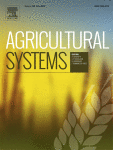Agroforestry has attracted considerable attention in recent years because of its potential to reduce poverty, improve food security, reduce land degradation and mitigate climate change. However, progress in promoting agroforestry is held back because decision-makers lack reliable tools to accurately predict yields from tree-crop mixtures. Amongst the key challenges faced in developing such tools are the complexity of agroforestry, including interactions between various system components, and the large spatial domains and timescales over which trees and crops interact. A model that is flexible enough to simulate any agroforestry system globally should be able to address competition and complementarity above and below ground between trees and crops for light, water and nutrients. Most agroforestry practices produce multiple products including food, fiber and fuel, as well as income, shade and other ecosystem services, all of which need to be simulated for a comprehensive understanding of the overall system to emerge. Several agroforestry models and model families have been developed, including SCUAF, HyPAR, Hi-SAFE/Yield-SAFE and WaNuLCAS, but as of 2015 their use has remained limited for reasons including insufficient flexibility, restricted ability to simulate interactions, extensive parameterization needs or lack of model maintenance. An efficient approach to improving the flexibility and durability of agroforestry models is to integrate them into a well-established modular crop modeling framework like APSIM. This framework currently focuses on field-scale crops and pastures, but has the capability to reuse or interoperate with existing models including tree, livestock and landscape models, it uses parameters that are intuitive and relatively easy to measure, and it allows scenario analysis that can include farm-scale economics. Various types of agroforestry systems are currently being promoted in many contexts, and the impacts of these innovations are often unclear. Rapid progress in reliable modeling of tree and crop performance for such systems is needed to ensure that agroforestry fulfills its potential to contribute to reducing poverty, improving food security and fostering sustainability.
DOI:
https://doi.org/10.1016/j.agsy.2015.11.005
Altmetric score:
Dimensions Citation Count:
























